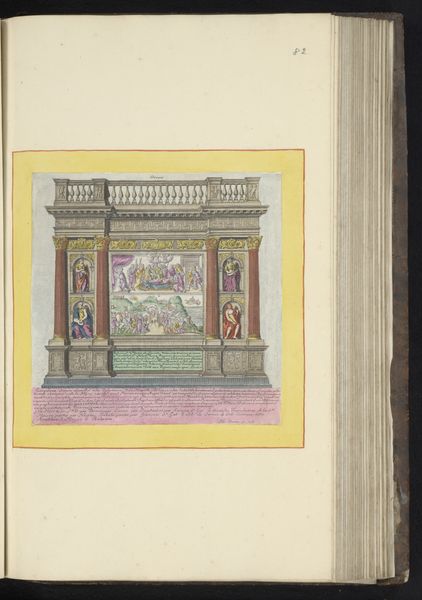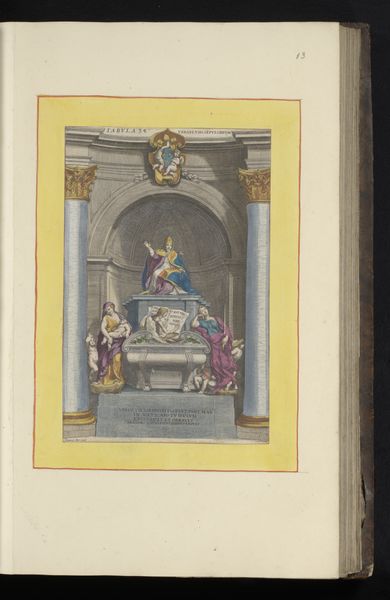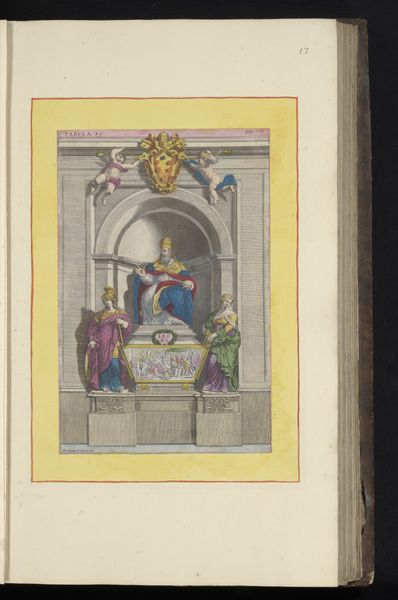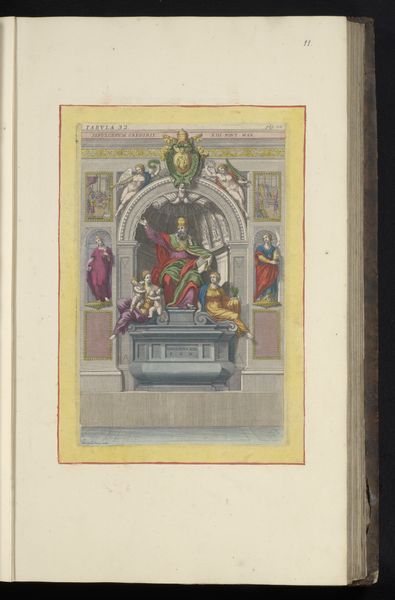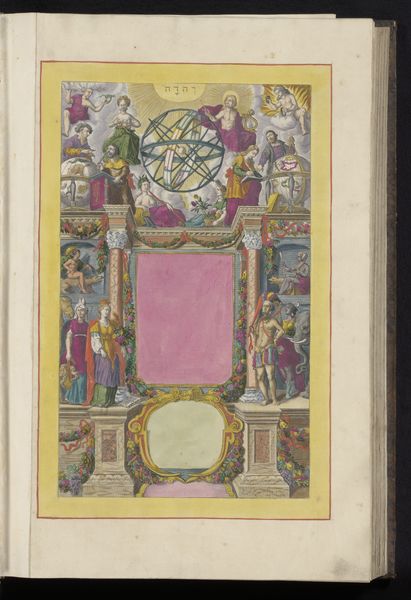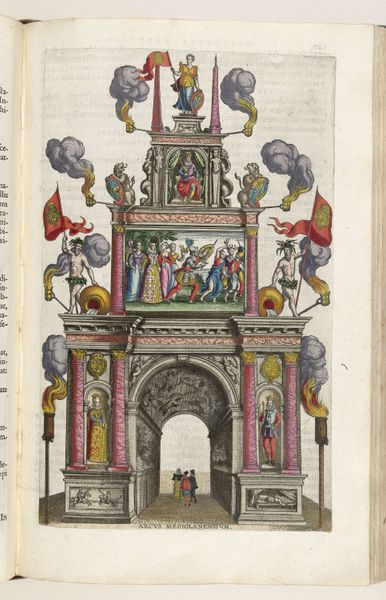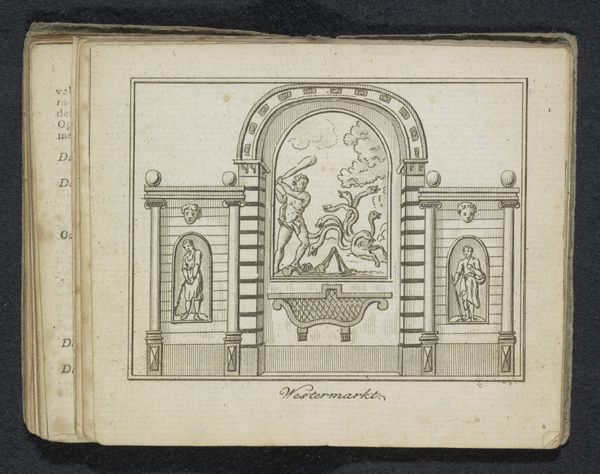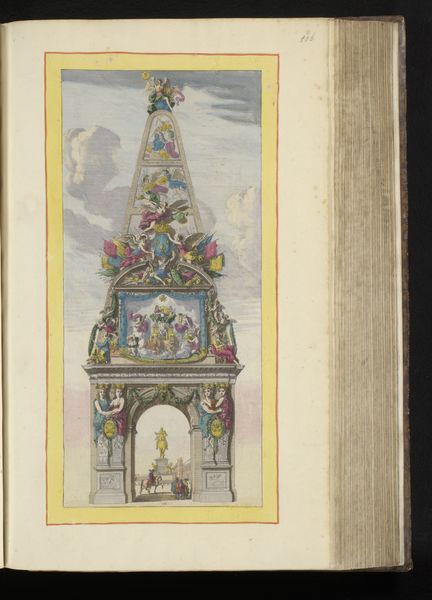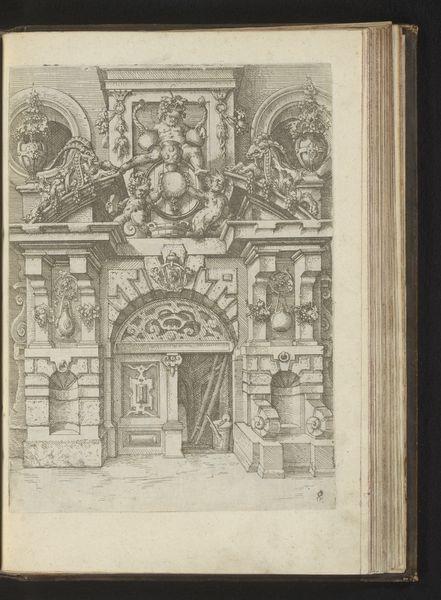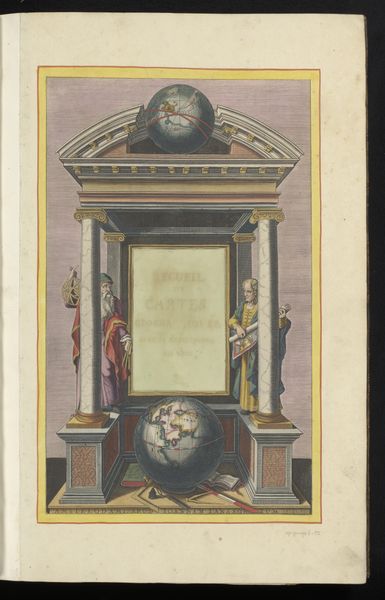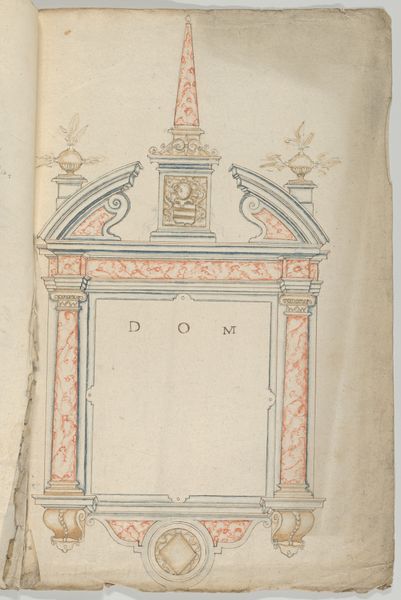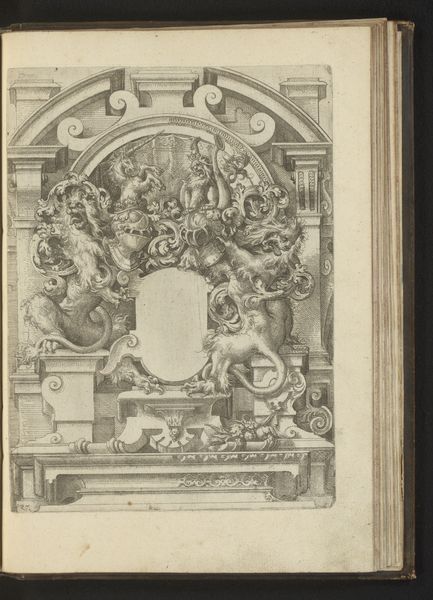
drawing, coloured-pencil, print, paper, watercolor, ink, engraving, architecture
#
drawing
#
coloured-pencil
#
narrative-art
#
baroque
# print
#
figuration
#
paper
#
form
#
watercolor
#
ink
#
coloured pencil
#
line
#
watercolour illustration
#
history-painting
#
engraving
#
architecture
Dimensions: height 305 mm, width 194 mm, height 530 mm, width 310 mm
Copyright: Rijks Museum: Open Domain
Curator: This piece, titled "Grave of Pope Clement X," is attributed to Arnold van Westerhout, dating from between 1696 and 1717. It’s an intricate drawing incorporating colored pencil, ink, watercolor, engraving, and print on paper. Editor: It has an incredible weight to it, doesn’t it? Even in two dimensions, you sense the stone, the gravity of it all. A baroque fantasy turned mausoleum blueprint, maybe? Curator: Exactly. Consider the materials used: Westerhout blended traditional drawing techniques with engraving to achieve this sense of depth and texture. The paper itself would have been a valued commodity, and the application of color suggests a desire for accuracy, mirroring the richness intended for the actual tomb. Editor: Those pinkish columns— unexpected, aren’t they? Almost playful against the stern subject matter. Were those colors choices meant to be translated literally in marble, or were they added as commentary? Curator: The coloured pencil allows for fine detail, while watercolor softens certain areas, giving them luminosity. The use of print implies a reproductive element, designed perhaps to circulate the design for patronage or artistic inspiration. Look at the figures—engraved precisely and consistently to show respect. The crest, the lettering—clearly intended for others to learn about this space, this monument to power. Editor: Makes you wonder about the artist's role, too. Were they more craftsperson, more artist, or something else in between? There's definitely a narrative being carefully crafted here, a visual legacy he’s orchestrating with precision. Was it meant as pure celebration, a somber reflection, or even, whisper it, as a bit of advertisement? Curator: Interesting point! Considering the economic context and prevailing patronage system, the work's function likely transcended mere commemoration. The drawing might serve as a demonstration of Westerhout’s capabilities. Editor: This reminds me—every death, and particularly a pope's, became this huge cultural moment for making meaning, for justifying wealth, and reinforcing existing structures of power. Well, it still happens, doesn’t it? Curator: True, a fascinating study of artistry interwoven with economics. Editor: Well, I for one will not argue with art being a commodity, although the spirit does soften the bluntness somehow. Thanks for revealing the hand that produced this image—now let's go contemplate the implications of it!
Comments
No comments
Be the first to comment and join the conversation on the ultimate creative platform.
